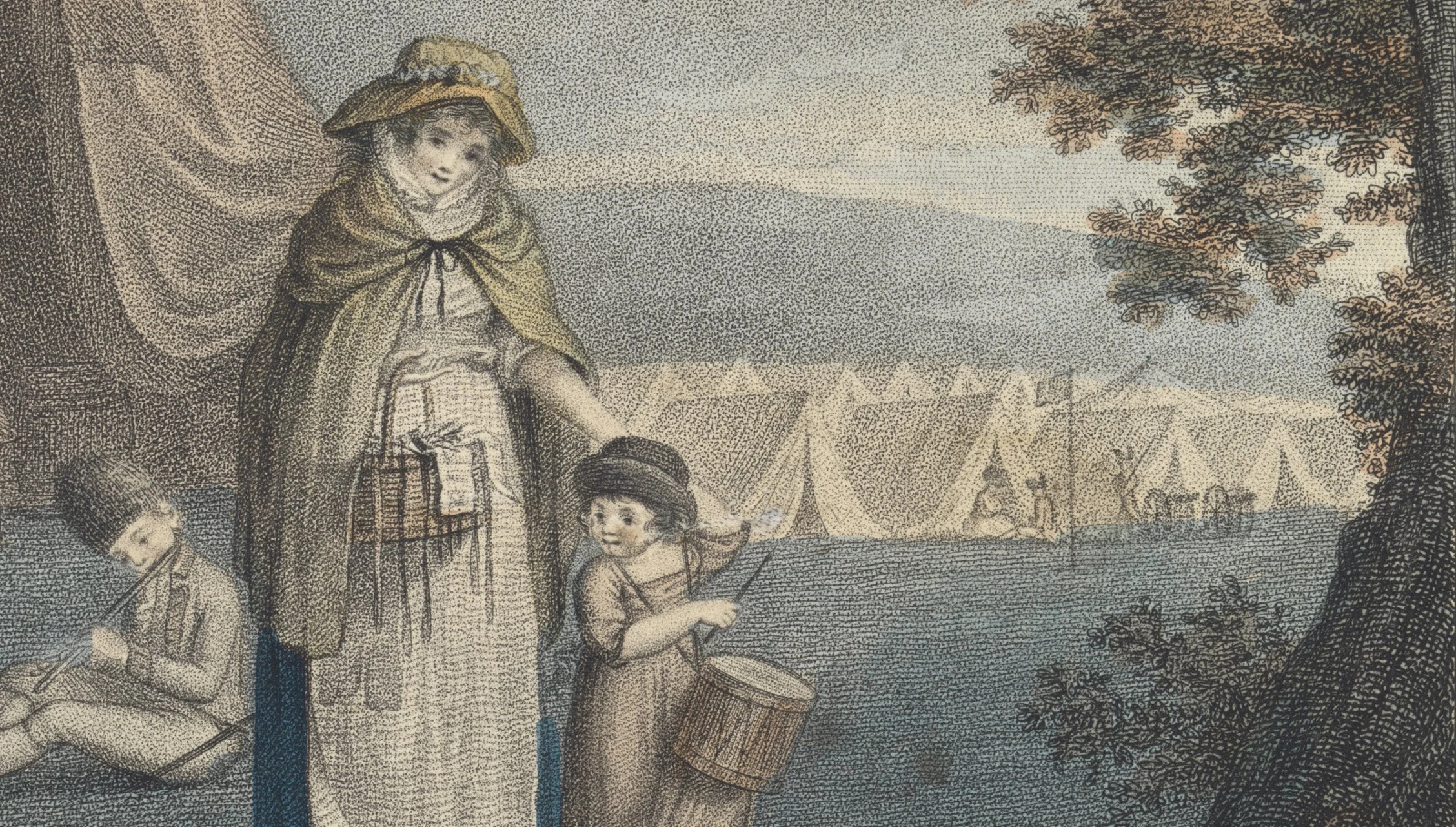
Mapping Widows Who Were Married After the Revolutionary War Ended, 1784-1850
How to Use the Map
Choose a widow from the list on the left by scrolling through and clicking on their name. This will narrow the display to show just their unique location point on the map. Click again on a widow’s name to unselect and return to the master map that displays all location points. Each point is placed within the geographical center of towns, if mentioned. If a widow did not indicate a specific town but did give the name of a county as a place of residence, the geographical center of the county is used as the location point. If no county was given, then the geographical center of a State is used.
Clicking on a point will open a tab on the right side of the map, which will give more information about the widow, including maiden name, if known, date of their marriage, location, and the presiding official.
Learn more about the sources that went into the making of this map.
Widow Ages
Eve Martin (W.2401) was the youngest of the cohort of widows who married New Jersey’s Revolutionary veterans after the war ended. Eve was only 34 years old when she applied for a pension on April 27, 1853. She was married on September 23, 1841, to Daniel Martin, who served six years in Col. Aaron Ogden’s 1st New Jersey Regiment, and was discharged at the end of the war at Newburgh, New York. He died on October 3, 1850, in Preston County, Virginia, where Eve was living when she applied less than three years later. Phebe Sofield, née Woodruff (W.8297), was the oldest widow, aged 102 when she applied on April 4, 1871 in Wayne County, Indiana. Phebe and Lewis Sofield were married at Connecticut Farms by Rev. Mr. Fish, “a Presbyterian Minister at Connecticut Farms” on October 13, 1785. Lewis died August 29, 1836, in Cannersville, Fayette County, Indiana.
Dates of Marriage
Mary Bryant (W.5917) was the first of the post-1783 cohort of widows to be married, when she and Jacob Bryant were married on January 12, 1784 in Swedesborough, New Jersey, by “Rev'd Dr. Colline, Rector of Trinity Church at Swedesborough.” Bryant served in Col. Elias Dayton’s 3rd New Jersey Regiment, and received a pension under the Act of March 18, 1818. He died in Pittsgrove, Salem County, New Jersey on August 10, 1843.
Sarah Dickerson (W.25543) was the last of the post-1783 cohort of widows to be married. She and Walter Dickerson, a Morris County militiaman, were married on August 26, 1850, likely in Vigo County, Indiana, where Walter died five years later, on October 8, 1855. Sarah was 73 years old when she applied for a pension in Vigo County on July 10, 1856.
Religious Denominations in New Jersey Veteran Marriages 1784-1850
As the United Stats expanded, and as new immigrants arrived and New Jersey’s revolutionary veterans emigrated to the westward, there was a noticeable shift in the religious denominations of the veterans and the women they would marry. After 1783, there were no more Anglican weddings performed for the Jersey veterans who would later apply for pensions, and new denomiations, such as German Reformed and Lutheran, began to appear. Presbyterianism, which was the dominant faith for Jersey veteran couples before 1783, was replaced by civil ceremonies conducted by Justices of the Peace, now accounting for nearly 30% of all services performed from 1784-1850.
In his doctoral dissertation, Rural Religion: Protestant Community and the Moral Improvement of the South Jersey Countryside, 1676–1800, historian John Fea described a unique type of church-goer - the ubiquitarian - a “group of Protestants… who regularly attended religious services, but seldom frequented the same church.” Mary Debow (W.456), and her husband, veteran Aaron Dewitt, were two such ubiquitarians, who fit the description of German Lutheran minister Wilhem Berhnmeyer, as being those who “believe that the difference (in religion) has any significance.” On September 11, 1785, Mary and Aaron were married by “Rev'd Mr. Blackwell, a Baptist clergyman, the Presbyterian clergyman Rev'd Joseph Clark postively refusing to marry any couple on the Sabbath.”

